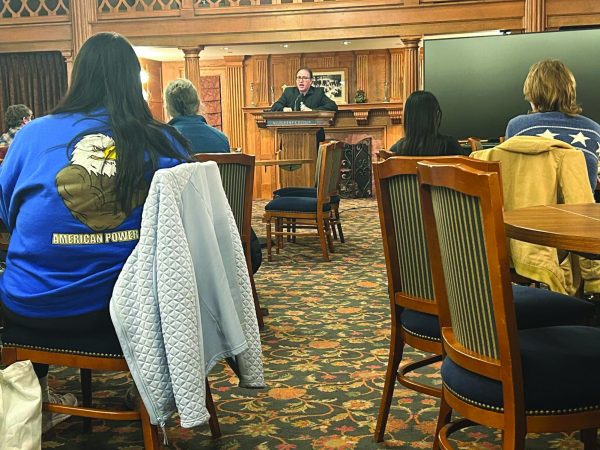Woodcock Creek Lake drains 21.5 feet in accident

Woodcock Creek Lake appears mostly empty, after dropping 21.5 feet last week.
One of Meadville’s top attractions, Woodcock Creek Lake, is typically home to smallmouth bass, walleye and muskies. However, the 330-acre lake has seen better days. Specifically, days when its water level was 21.5 feet higher.
According to the Meadville Tribune, the saga began when the lake was inadvertently drained. A frozen automated monitor left the dam’s floodgates open and was followed by ice blocking the way for any water to drain into the dam’s manual backup control tower.
The lake’s surface level proceeded to drop 21.5 feet over the next eight days. Concerns began with how the mistake occurred and then turned to whether the water levels would return. With the mistake solved and water levels steady increasing again, many are now wondering what consequences await the lake’s ecosystems.
“As a non-researcher, I would say there will not be that big of an impact because the stream is natural and continuing to run through,” Director of Creek Connections Wendy Kedzierski said. “But it probably flushed downstream some of the critters and some big fish who were brought in to live there.”
Fish and other critter populations moving from the lake into the creek adds a wrinkle to how everything could turn out.
“The fish populations will probably be decreased which would affect the food systems, oxygen levels and chemical levels,” said environmental science and sustainability major Connor Mastalerz, ’22. “I’d imagine there would be some kind of affect downstream as well.”
What lies downstream of Woodcock Lake is French Creek, where the ecosystem looks very different.
“French Creek is a biodiversity hotspot,” Mastalerz said. “I know a lot of classes in the environmental science department will use French Creek to run labs in. There’s likely to be some impact on this ecosystem but I’m not sure how drastic it would be.”
The long-term effects are yet to be seen and hard to predict, considering the variable of a very different ecosystem awaiting fish that make it from Woodcock Lake to French Creek.
As for how Woodcock Lake will rebound from these changes, Kedzierski maintains that a return to normal may be able to happen sooner rather than later.
“I really don’t think it’s going to be that big of a difference,” Kedzierski said. “It’s not like there was a thriving aquatic plant bed. There’s a lot of algae and bacteria that’s still down there in that wet sand right now.”
There are plenty of organisms that, while small in stature, have a large role on how an ecosystem functions. If those organisms are able to re-populate in a timely manner then the larger creatures will have a better chance to follow suit.
“One of my specialties is the macroinvertebrates, the bugs that live in the creek, and they rebound pretty quickly,” Kedzierski said. “They’ll fly up and lay their eggs in there and start anew. I just can’t imagine that it will be terrible for years and years.”
Although there are many factors that will contribute to the lake’s ability to return to normal, for many people it is all about the fish.
“I’ve unsuccessfully gone shore fishing at Woodcock before,” Zach Ecker, ’21, said. “I still haven’t caught a muskie which they say is the fish of 10,000 casts because they’re hard to catch. I’m hoping their population rebounds so I can finally catch one. It should only take three to four years for them to repopulate but hopefully some are brought in to help speed up that process.”
The Pennsylvania Fish and Boat Commission maintains some of the fish populations by stocking the lake on a rotating basis. The PFBC is scheduled to add trout to Woodcock Creek in late March and add fingerling walleyes in May.
This is not the first time a lake in the area has been drained. Tamarack Lake remained drained for years while work was being done to its dams. The fishery is not likely to return to normal for some years to come.
“I think one of the reasons people are so upset about Woodcock is because of Tamarack (Lake),” Kedzierski said. “So when Woodcock happened a lot of people might have been upset because they just got Tamarack back.”
Many of the long term effects on the lake’s ecosystems and populations can only be speculated on for now. But while the water levels are still rebounding, the lake already looks much more inhabitable for fish to live in.

Jordan Greynolds, '22, is a features editor for The Campus newspaper and it is his second semester on staff. He is a business and religious studies double...







